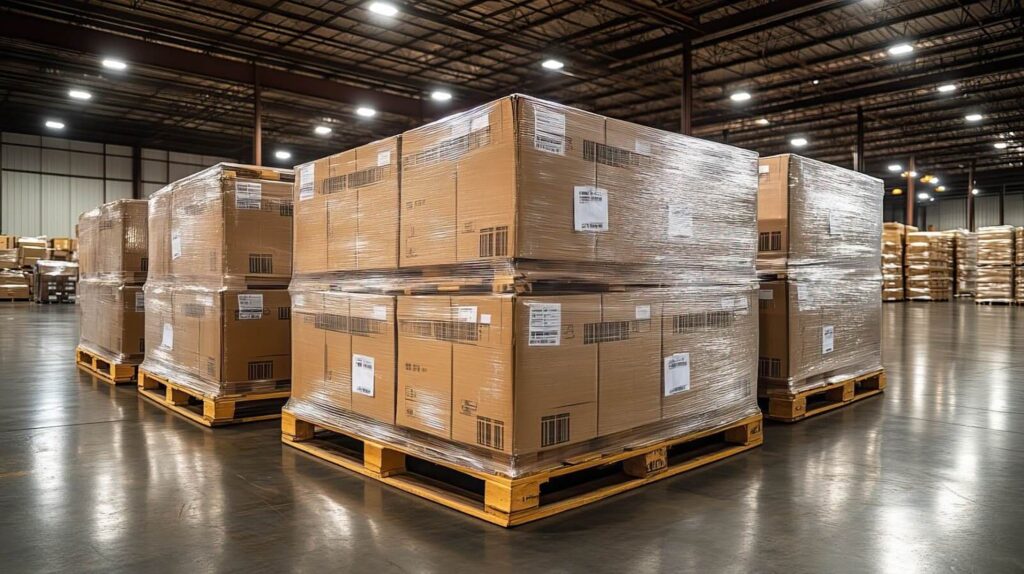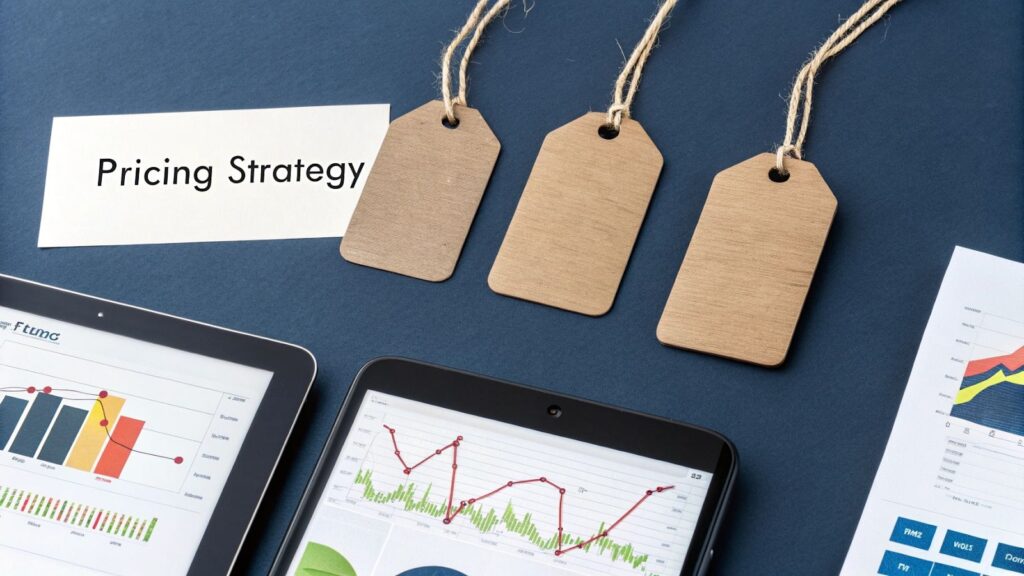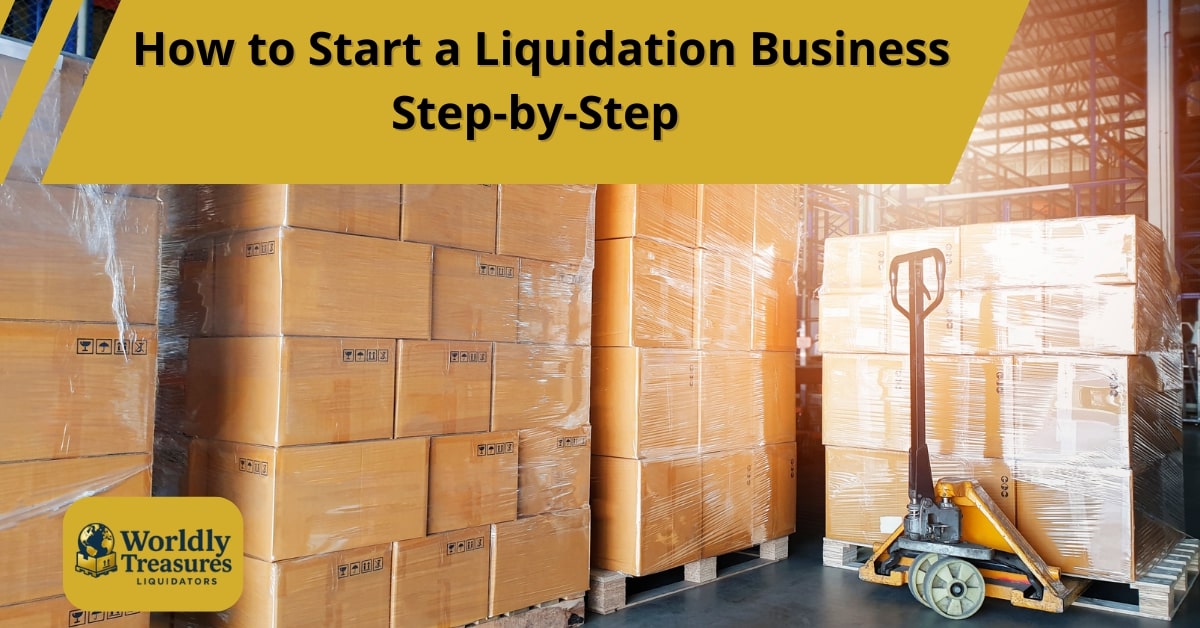Want to turn retail overstock into profit? Starting a liquidation business is one of the smartest ways to build a resale operation that actually makes money.
You’re buying discounted inventory from retailers and flipping it through online marketplaces, bin stores, or wholesale channels. Here’s your step-by-step roadmap to get started right.
TL;DR: What You’ll Learn About Starting a Liquidation Business
- Picking the right business model – Choose from online reselling, bin stores, wholesale truckloads, or hybrid approaches based on your resources
- Starting with a lean plan – Use the 50/30/20 budget breakdown to stay profitable
- Getting the legal basics right – LLC structure, resale certificate, and basic insurance protect your business without breaking the bank
- Finding reliable suppliers – Partner with trusted brokers offering manifested loads over risky unmanifested purchases
- Diversifying sales channels – Different products perform better on different platforms – test and focus on what works
- Scaling the smart way – Grow your infrastructure before you need it, not after you’re drowning
Step 1: Understand the Market Before You Invest
Sure, you can make money finding cheap stuff and flipping it. But the real money comes from understanding why that inventory exists in the first place.
Every time someone returns that coffee maker or a retailer orders too many winter coats, that merchandise has to go somewhere. The macro trends are working in your favor right now. Returns are exploding because of e-commerce growth. Supply chain hiccups mean more overstock. Business closures create liquidation opportunities.
Your niche options break down into several categories:
- Electronics – People understand the value, and they’re easy to ship
- Apparel – Consistent volume but requires more work on sizing and condition assessment
- Home and garden – Tools and outdoor equipment move well
- Health and beauty – Products have loyal buyers who know brands
- Toys and games – Seasonal goldmines if you time it right
- General merchandise – Lets you diversify risk across multiple product types
Before you jump in with both feet, run the numbers on your potential niche. Not every product category delivers the same returns, and some require more expertise than others.
Smart move? Test different scenarios before you commit your cash.
Step 2: Choose a Business Model That Fits You
Your success comes down to picking a model that matches your budget, how much risk you can handle, and what kind of logistics you can actually manage. Don’t try to be everything to everyone right out of the gate.
Online Reselling (Amazon/eBay/Facebook)
Start here if you’re testing the waters. Lower upfront costs, no rent to pay, and you can reach millions of buyers.
The downside? You’re paying platform fees and competing with everyone else doing the same thing. But it’s a smart way to learn the ropes without a massive commitment.
Physical Bin Stores or Flea Markets
This is where you get to interact with customers face-to-face and see immediate cash flow. No waiting for online payments to clear.
The trade-off is higher overhead – you’re paying for space, utilities, and your time manning the store. Works great if you enjoy the retail side and want to build local relationships.
Wholesale Truckload Resale
This is the big leagues, and we don’t recommend it if you are just starting out. You’re buying entire truckloads and selling pallets or smaller lots to other resellers.
Higher volume means better profit potential, but you need serious storage space and enough capital to buy big. You’re essentially running a B2B operation instead of selling to consumers.
Hybrid Model
Mix and match the above approaches. Maybe you buy pallets, keep the best stuff for your online store, and wholesale the rest to other resellers. It’s a bit more complex to manage, but you’re not putting all your eggs in one basket.
Look, we’re not trying to burst your bubble here, but it all boils down to being honest about what you can actually handle.
If you’ve got limited storage space, don’t jump into truckload buying. If you hate dealing with individual customers, skip the flea market route.
Match the model to your reality, not your dreams.
Check out our further detailed guides in our Learn Hub
Step 3: Write a Lean Business Plan

Nobody wants to spend weeks writing a 50-page business plan that you’ll never look at again. But you do need to get clear on the basics before you start spending money.
Define Your Approach
Pick your buyer type – are you going after bargain hunters, other resellers, or bulk buyers? Choose your niche focus from those categories we talked about. Decide on your sourcing method – online marketplaces, direct relationships, or auctions.
Map Out Your Money
Here’s a simple breakdown that works for most liquidation businesses:
- 50% goes to buying inventory
- 30% covers your operations (storage, shipping, labor, tools)
- and 20% handles marketing, insurance, and having some cash set aside for surprises.
Your startup costs might look something like:
- Initial inventory purchase: $2,000-$5,000
- Storage solution (could be your garage, storage units, or warehouse space)
- Basic tools and software for processing orders
- Business registration and licensing fees
- Insurance coverage
Don’t overthink this part. You’re not applying for a bank loan – you’re just making sure you’ve thought through the basics. The real learning happens when you start buying and selling, not when you’re writing plans.
Ready to run some numbers? Check out our ROI calculator.
Step 4: Get Your Legal Setup Right (Without Overwhelm)
Nobody starts a business because they’re excited about paperwork. But getting your legal foundation right from the start saves you aggravation and money down the road.
Pick Your Business Structure
You’ve got a few options, and honestly, most liquidation businesses do fine as an LLC.
An LLC (Limited Liability Company) is often chosen by liquidation businesses as it offers a good balance of personal liability protection and flexible tax options.
Sole proprietorship is simpler but offers zero protection if something goes wrong.
A corporation, while more complex to establish, provides the strongest protection from personal liability.
Get Your Must-Have Licenses
Every state is different, but here’s what most liquidation businesses need:
- Business registration (usually with your state)
- Resale certificate – this is huge because it lets you buy inventory without paying sales tax.
- Local business permits (check with your city or county)
Some jurisdictions might want special permits depending on what you’re selling. Electronics, cosmetics, or food items sometimes have extra requirements.
Basic Insurance
Don’t go crazy here, but you need some protection:
- General liability covers you if a customer gets hurt or claims your product damaged their stuff
- Product liability protects you from defective merchandise claims
- Business interruption helps if you can’t operate for a while
The goal is protection without breaking your budget. You’re not trying to become bulletproof – just smart about the big risks that could sink your business.
Step 5: Source Inventory from Trusted Suppliers

This is where the rubber meets the road. Your ability to find good inventory at the right prices makes or breaks everything else you do.
The Four Types of Sourcing
Direct from Retailers – This is the holy grail but takes time to build relationships. You’re getting the first pick of returns and overstock, often in better condition. The catch? You usually need to prove yourself with smaller suppliers first.
Online Marketplaces – These platforms are where most people start. Tons of options, but you’re competing with everyone else. Learn to filter searches by condition, location, and category. Don’t just look at the price – factor in shipping costs and your time.
Auctions – Can be goldmines or money pits. You’re often buying sight unseen, so there’s real risk involved. But if you know your stuff and can spot opportunities others miss, the deals can be incredible.
Trusted Brokers – Companies that buy large lots and break them down for smaller businesses. You pay a bit more per item, but you get manifest accuracy, verified condition reports, and someone to call when things go wrong.
| Source Type | Condition | Cost | Risk Level | Best Use Case |
| Direct Retailers | Often good | Potentially lower | Low | Experienced resellers with relationships |
| Online Marketplaces | Mixed | Varies widely | Medium | Beginners learning the market |
| Auctions | Mixed | Varies widely | Medium-High | Opportunistic buyers comfortable with uncertainty |
| Trusted Brokers | Verified | Competitive | Low | New businesses wanting protection |
How to Vet a Supplier
Ask for detailed manifests before you buy anything. Find out why they’re liquidating – returns, overstock, or store closure all mean different things for condition. Check their reputation through forums, reviews, and other buyers.
The smart move when you’re starting out? Partner with established companies that offer manifest accuracy, responsive support, and no lock-up funds.
This approach minimizes risk while you build expertise – exactly what companies like WT Liquidators provide for new businesses with verified loads and ongoing support.
Ready to source quality inventory?
Check out our pallet liquidation and truckload liquidation services for manifested loads with responsive customer support.
Step 6: Build Your Operations Foundation

Once you start moving inventory, you’ll quickly realize that good systems make the difference between profit and chaos.
Storage Basics
Your storage needs depend on your volume and budget:
- Home-based setup – Start with your garage, basement, or spare room. Works for testing the waters, but you’ll outgrow it fast
- Storage units – A good middle ground for growing businesses. Climate control matters for electronics and certain products
- Warehouse space – When you’re ready for serious volume. Look for loading docks, good lighting, and room to expand
💡 Pro tip: Plan for 30% more space than you think you need. Inventory has a way of multiplying faster than you expect.
Inventory Management Tools
Don’t try to track everything in your head or on paper:
- Basic software – Start with something simple that tracks what you bought, where it came from, and what condition it’s in
- Barcode scanners – Speed up your check-in process and reduce mistakes
- Digital cameras – You’ll need decent photos for online listings
- Spreadsheets – Even basic Excel tracking beats trying to remember everything
Inspection and Processing
This is where you separate the profitable items from the headaches:
- Condition sorting – Create categories like “new,” “like new,” “good,” and “parts only”
- Basic refurbishment – Clean everything, test electronics, check clothing for damage
- Proper labeling – Tag items with condition, source, and any notes for later
- Quality standards – Decide what you will and won’t sell. Your reputation depends on consistency
Packaging and Fulfillment
Think about this before your first sale:
- Shipping supplies – Stock boxes, bubble wrap, tape, and labels in common sizes
- Multi-channel strategy – Some items sell better on different platforms
- Local pickup options – Saves shipping costs on bulky items
- Return process – Have a clear policy and stick to it
💡 Pro tip: If you’re doing a hybrid approach, keep your best items for direct sales and wholesale the rest to move inventory faster.
Step 7: Set Up Sales Channels That Match Your Niche
Different products perform better on different platforms. Don’t put all your eggs in one basket. Test what works and double down on what brings results.
Online Marketplaces
eBay works great for electronics, collectibles, and unique items. The auction format can drive prices up on desirable products. You’ll pay listing fees and final value fees, but the buyer traffic is massive.
Amazon is king for brand-name products with existing demand. Their fulfillment program can handle shipping for you, but they’re strict about requirements and category restrictions. Factor in their fees when calculating profits.
Facebook Marketplace shines for local sales and larger items where shipping gets expensive. No listing fees, direct buyer communication, but you’re limited to your local market unless you want to deal with shipping.
Local Sales Strategies
Flea markets give you low overhead, immediate cash, and real customer feedback. You see what sells and what doesn’t without waiting for online analytics.
Bin stores create urgency with daily price drops. Start items high and reduce prices each day until they sell. Customers love the treasure hunt aspect.
Pop-ups let you test retail concepts without long-term commitments. Partner with existing businesses or rent space for events.
Pricing and Trust Factors

- Research comparable sales – See what similar items actually sold for, not just listing prices
- Bundle deals – Increase average order value by grouping related items
- Clear return policies – Build buyer confidence, especially important with liquidation inventory
- Accurate descriptions – Be honest about the condition. Your reputation is everything
- Quick responses – Answer buyer questions fast to close more sales
💡 Pro tip: Test the same product type across multiple platforms to see where it performs best, then focus your efforts there.
Read our Conversion Rate Optimization Guide for strategies that increase your sales without spending more on inventory.
Step 8: Market and Grow Your Liquidation Brand

Getting customers to find you once is good. Getting them to come back and tell their friends is how you build a real business.
Social Media
Instagram and TikTok are perfect for unboxing videos and product reveals. People love seeing what’s inside mystery pallets – it’s like opening presents on camera.
Facebook groups work well for building communities around your niche. Share deals, answer questions, and become the go-to person for liquidation finds in your area.
YouTube lets you create longer-form content about your sourcing process, product reviews, or “what’s in the pallet” videos. Content that educates tends to build more loyal followers.
Live streaming on any platform creates urgency and excitement. Host real-time inventory reveals, Q&A sessions, or flash sales.
Email Marketing That Gets Results
- Segment by interest – Send electronics deals to tech buyers, clothing deals to fashion buyers
- New arrival notifications – Let subscribers know first when you get fresh inventory
- Exclusive discounts – Reward repeat customers with early access or special pricing
- Weekly inventory updates – Keep your business top-of-mind with regular communication
Content Marketing Ideas
Share your expertise through helpful content:
- Buying guides – “What to Look for When Buying Refurbished Electronics”
- Behind-the-scenes content – Show your sourcing and inspection process
- Customer success stories – Feature buyers who found great deals
- Industry insights – Share trends you’re seeing in liquidation markets
Local Community Marketing
- Partner with other small businesses for cross-promotion opportunities
- Join local business networks and chambers of commerce
- Sponsor community events to build brand recognition
- Use targeted local advertising for warehouse sales or special events
💡 Pro tip: Build authority by being genuinely helpful. Answer questions in forums, share tips on social media, and become known as someone who knows the liquidation business.
We don’t like to brag, but our approach to community marketing at WT Liquidators, which involves transparent operations and responsive support, seems to work pretty well.
Step 9: Prepare to Scale
Growth feels great until your systems can’t handle it. Scaling the right way means building capacity before you need it, not scrambling to catch up after you’re already drowning.
Infrastructure Upgrades Worth Making
Warehouse expansion – Move from storage units to a dedicated space with loading docks and room to grow. Look for places with good lighting and easy truck access.
Inventory automation – Upgrade from spreadsheets to real inventory management software. Barcode systems save hours of manual work.
Shipping partnerships – Once you hit decent volume, negotiate better rates with carriers. Your per-package costs should go down as volume goes up.
Quality control processes – Standardize how you inspect and grade products. Train anyone helping you so quality stays consistent.
Diversification Tips
- Multiple supplier relationships – Don’t put all your eggs in one basket, even if your main supplier is solid
- Expand product categories – Test new niches based on what your customers are asking for
- Geographic expansion – Consider serving new markets or regions, but master your local area first
- Wholesale opportunities – Start selling bulk lots to other resellers who can’t buy direct
Building Your Dream Team
- Processing staff – Handle the increased volume of incoming inventory
- Listing specialists – Create quality product listings faster than you can alone
- Customer service – Maintain response times as your sales volume grows
- Warehouse management – Keep things organized as operations get more complex
Final Tips: Common Mistakes to Avoid
Learn from other people’s expensive lessons:
- Overpaying for unmanifested loads – If they won’t tell you what’s in it, there’s probably a reason
- Ignoring freight or return costs – That “cheap” pallet isn’t cheap if shipping costs more than the merchandise
- Trying to sell everything through one channel – Diversify your sales platforms to maximize revenue
- Not segmenting your buyers – Electronics buyers and clothing buyers want different things and different communication styles
Ready to Launch Your Liquidation Business?
Starting a liquidation business doesn’t have to be complicated. You need reliable suppliers, simple systems that work, and the willingness to learn as you go.
The liquidation industry rewards people who do their homework, treat customers fairly, and build relationships with quality suppliers. With manifested inventory, responsive support, and transparent operations, you can focus on growing your business instead of worrying about your supply chain.

